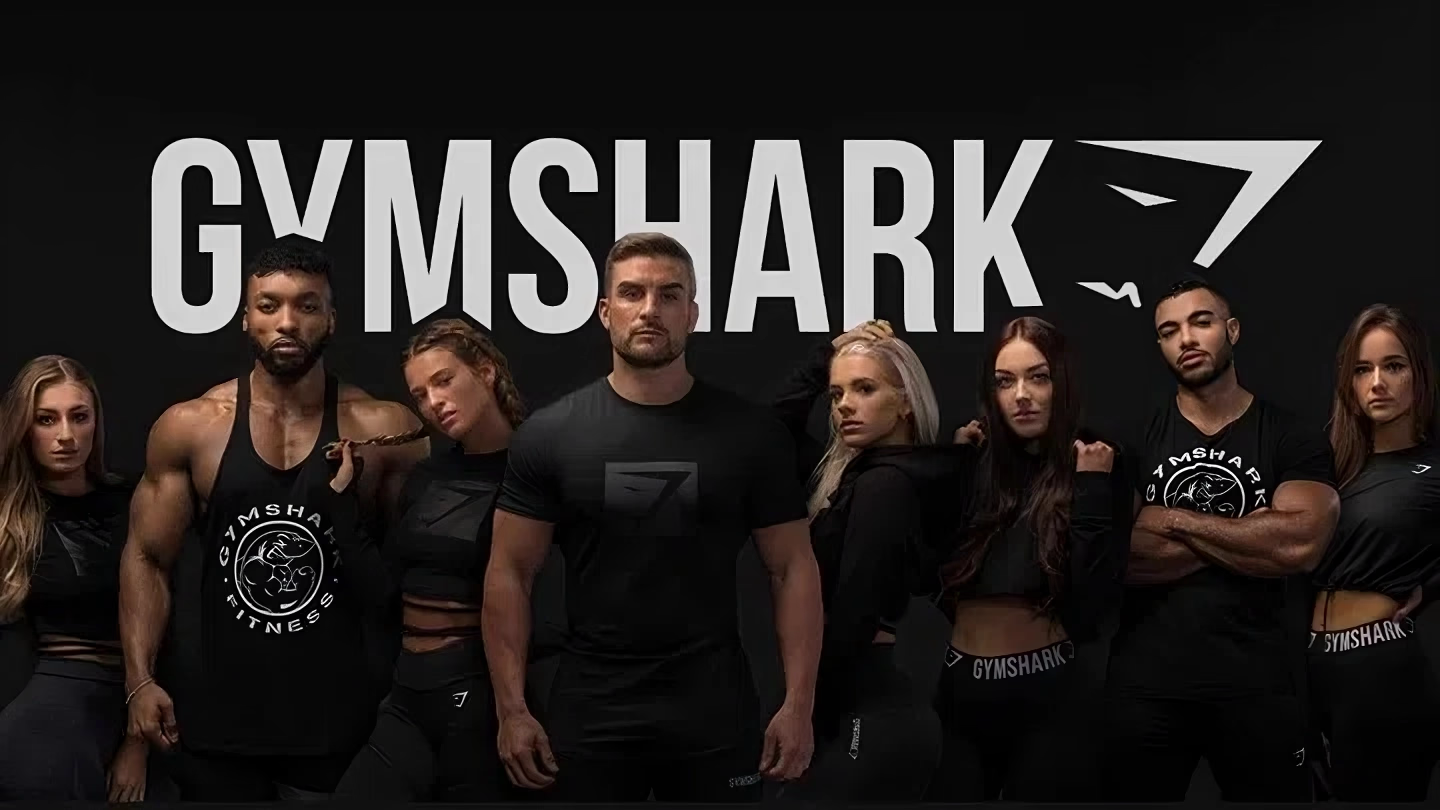Case Study: Brand Management in the Digital Age — Burberry, Gymshark, and Netflix

Introduction
The practice of brand management has evolved substantially over the past three decades. Early frameworks such as Keller’s brand equity model (1993) emphasised awareness, associations, perceived quality, and loyalty as the foundations of strong brands. These principles remain relevant, but the digital environment has stretched and complicated their application. In an era where consumer interaction is continuous and multi-directional, brands can no longer be understood simply as assets owned and managed by firms; they are increasingly shaped by global connectivity, cultural flows, and stakeholder participation.
Recent scholarship reflects this shift. Steenkamp (2020) highlights the pressures facing global brands in a fragmented digital landscape, where maintaining consistency across markets must be balanced with the demand for local resonance and rapid responsiveness. Swaminathan et al. (2020) describe a world of “hyperconnected branding,” in which boundaries blur between firms, influencers, consumers, and social causes, with brands becoming cultural and political actors as much as commercial entities. Meanwhile, Ramaswamy and Ozcan (2016) propose a co-creation logic: brands achieve value not through unilateral communication but via platforms that enable collaborative experiences between companies and stakeholders.
Against this backdrop, the cases of Burberry, Gymshark, and Netflix provide compelling contrasts. Burberry illustrates how a heritage luxury brand can use digital storytelling to reassert its identity amid declining investor confidence. Gymshark, a born-digital fitness apparel company, demonstrates the power of influencer communities and co-created meaning in shaping rapid global growth. Netflix, as a platform brand, reveals the opportunities and risks of monetising engagement through advertising innovation, while facing consumer backlash and questions of authenticity.
Together, these cases capture the contemporary challenges of brand management in the digital age: how to balance equity with authenticity, global reach with local trust, and corporate control with stakeholder co-creation.
Brand Narratives
Burberry (Heritage and Repositioning)
Burberry offers an instructive example of how a heritage brand attempts to reassert its identity in the digital age. Founded in 1856, the company has long been associated with British craftsmanship and iconic products such as the trench coat and the checked scarf. However, in the late 2010s and early 2020s, analysts suggested that Burberry risked diluting its heritage by chasing high-fashion exclusivity, alienating core customers and weakening its distinctiveness in a crowded luxury market.
The appointment of Joshua Schulman as CEO in 2024 marked a deliberate strategic pivot. Under his leadership, Burberry has sought to “take the brand back to its roots,” re-emphasising outerwear and heritage products as the foundation of its identity. This repositioning has been supported by significant marketing investment in digital storytelling, from immersive campaigns highlighting the durability of its coats to curated content linking the brand to British culture and landscapes. Vogue Business and Marketing Week note that early signals — including stronger brand engagement online — suggest the strategy is beginning to restore “brand desire,” even as the company posted a pre-tax loss of £66 million in early 2025.
From an academic perspective, Burberry’s repositioning can be interpreted through Morhart et al.’s (2015) framework of brand authenticity, which defines perceived authenticity across four dimensions:
- Continuity: emphasising timeless heritage and resisting passing trends.
- Credibility: delivering on the promise of quality and transparency.
- Integrity: acting in line with moral values and social responsibility.
- Symbolism: supporting consumers’ self-expression and identity projects.
Burberry’s renewed focus on trench coats and scarves speaks directly to continuity and credibility, reinforcing its status as a British heritage brand. Yet the risks of such a strategy are equally clear. In a hyperconnected marketplace where luxury consumers expect innovation and novelty, retreating to heritage can be seen as reactive branding rather than authentic renewal. The brand’s challenge lies in balancing its historic identity with the demands of global consumers for digital engagement, cultural relevance, and ethical responsibility.
This tension raises a central question: Is Burberry’s strategy an authentic return to its roots, or a defensive move in the face of commercial pressures? For students of brand management, the answer depends on how consumers interpret the brand’s actions across Morhart et al.’s four authenticity dimensions.

Gymshark (Influencer-Born Community)
Gymshark represents a new generation of digitally native brands that have built equity not through traditional advertising, but through influencer-led communities. Founded in 2012 by Ben Francis, the UK-based fitness apparel company scaled rapidly by leveraging social media platforms, particularly Instagram and YouTube, where fitness influencers showcased Gymshark products as part of aspirational lifestyles. This model blurred the boundary between marketing and community-building, positioning Gymshark less as a clothing company and more as a cultural hub for young fitness enthusiasts.
By 2025, Gymshark is moving into a new phase of growth. The brand recently launched its first performance footwear collaboration with R.A.D, marking its entry into the competitive sportswear footwear segment. At the same time, it has opened permanent stores in continental Europe and introduced a loyalty programme designed to reward both purchases and engagement — for example, tracking workouts as well as spend. These moves show Gymshark’s ambition to evolve from a social-media-first challenger into a fully-fledged global competitor to Nike and Adidas, while retaining its grassroots credibility.
From an academic perspective, Gymshark’s trajectory can be illuminated by two key lenses:
Influencer leadership: Research highlights that opinion leadership on platforms like Instagram depends less on volume and more on originality and uniqueness. Hughes et al. (2019) and Casaló et al. (2020) show that creative, authentic content drives followers’ behavioural intentions — from interaction and recommendation to adopting advice. Gymshark’s influencers are not merely endorsers but community leaders, whose originality and personal fit with audiences reinforce the brand’s credibility.
Co-creation ecosystems: Ramaswamy and Ozcan (2016) argue that digital brands thrive by creating platforms for stakeholder co-creation, where value is generated through joint experiences rather than top-down messaging. Gymshark exemplifies this model: customers share training routines, generate viral content, and feed directly into product launches. In effect, consumers become co-designers of the brand’s identity, strengthening emotional attachment but also raising questions about long-term control.
Gymshark’s reliance on influencers and co-creation brings both power and fragility. Its rapid growth demonstrates the potency of community-led branding, but its authenticity hinges on maintaining the originality and uniqueness of its influencer network. As it expands into new categories and channels, the key challenge will be whether Gymshark can sustain this sense of co-created authenticity, or whether the pressures of scaling will erode the very distinctiveness that made the brand successful.

Netflix (UK) (Platform Branding and Controversy)
As a global streaming giant, Netflix has become one of the most visible examples of brand management in the digital age. The company’s brand identity has long rested on the promise of personalised entertainment and consumer empowerment — “watch what you want, when you want.” Yet, as growth in subscriber numbers slows, Netflix is increasingly reliant on new monetisation strategies that reshape its brand positioning and raise questions of consumer trust.
A major development has been the expansion of Netflix’s ad-supported tier in Western Europe, including the UK. Between late 2024 and mid-2025, viewing hours on the ad-tier rose by more than 30%, supported by a push into programmatic advertising and the appointment of senior UK ad-sales leadership. However, innovations such as “pause ads” — promotional content displayed when viewers pause a show — have provoked backlash, with UK subscribers threatening to cancel. This illustrates the fine line between enhancing revenue and undermining the user experience that has been central to Netflix’s brand promise.
At the same time, Netflix has faced cultural and reputational controversies. In summer 2025, the second season of With Love, Meghan — Meghan Markle’s lifestyle series — suffered a steep decline in UK viewership amid harsh media criticism. While the couple’s broader Netflix deal continues, the negative publicity has fed into a narrative of disconnect between Netflix’s global brand ambitions and the cultural expectations of its UK audience.
These developments can be analysed through two key academic lenses:
Hyperconnected brand dynamics: Swaminathan et al. (2020) argue that in hyperconnected environments, brand boundaries blur as companies act simultaneously as platforms, advertisers, and cultural actors. Netflix embodies this tension: it is not just a content provider but also an ad-seller, a cultural producer, and a political flashpoint. This multiplicity makes the brand powerful, but also exposes it to reputational risks from multiple directions.
Authenticity risk: Morhart et al. (2015) emphasise that brand authenticity depends on credibility (delivering what is promised) and integrity (acting with sincerity and responsibility). Netflix’s expansion into intrusive ads and polarising content raises questions about whether the brand is staying true to its founding promise of user-centric entertainment. For some consumers, these moves appear less as authentic evolution and more as commercial overreach.
The UK case thus highlights the challenges of platform branding in the digital age. Netflix must simultaneously satisfy advertisers, retain subscribers, and navigate cultural controversies. Whether it can do so without eroding authenticity will determine its long-term brand strength.
Theoretical Integration
The contrasting cases of Burberry, Gymshark, and Netflix illustrate how contemporary brand management is shaped by the interplay of globalisation, hyperconnectivity, authenticity, influencer dynamics, and co-creation. The academic literature provides a set of lenses through which these developments can be critically interpreted.
Steenkamp (2020) emphasises the challenges of building and maintaining strong global brands in a digital environment characterised by fragmentation, transparency, and heightened consumer scrutiny. Burberry’s attempt to re-centre itself on British heritage highlights the tension between global luxury appeal and local cultural authenticity. Gymshark, as a direct-to-consumer (D2C) brand, faces the challenge of scaling its community-driven ethos into international markets without losing distinctiveness. Netflix must negotiate the global–local dynamic most explicitly: content controversies such as With Love, Meghan show how global productions are interpreted through national cultural lenses, raising questions of fit.
Swaminathan et al. (2020) describe the rise of “hyperconnected branding,” where firms, consumers, and influencers jointly shape brand meaning, and where brands increasingly act as social and cultural participants. Netflix exemplifies the blurring of roles, simultaneously functioning as a content provider, an advertising platform, and a cultural flashpoint. Gymshark represents hyperconnected co-creation at the level of community: its consumers are not passive audiences but active co-shapers of brand identity. Burberry, by repositioning itself as a “cultural symbol of Britishness,” similarly engages in cultural performance that extends beyond fashion into national identity.
Morhart et al. (2015) conceptualise brand authenticity through four dimensions: continuity, credibility, integrity, and symbolism. Each case highlights one of these authenticity tests. Burberry is judged by whether its renewed focus on heritage products signals true continuity or defensive retrenchment. Netflix’s integrity and credibility are questioned as advertising innovations appear to undermine user-centric promises. Gymshark’s symbolism is central, as the brand functions as a resource for young consumers’ identity projects in fitness and lifestyle communities.
Hughes et al. (2019) and Casaló et al. (2020) underscore the role of originality and uniqueness in driving influencer opinion leadership. Gymshark epitomises this principle: its reliance on influencer communities illustrates how originality and authentic fit drive engagement and trust. At the same time, this reliance exposes the brand to fragility if influencer authenticity is perceived to be compromised.
Finally, Ramaswamy and Ozcan (2016) argue that brand value creation increasingly occurs on engagement platforms, where enterprises and stakeholders co-create meaning and experiences. Netflix’s ad-tier and experimental ad formats can be seen as attempts to reconfigure the brand’s engagement platform , though the consumer backlash highlights the risks of co-creation being experienced as exploitation. Gymshark’s loyalty programme and social media communities function as engagement ecosystems where consumers co-create brand value through participation, advocacy, and identity work.
Taken together, these frameworks highlight that digital-age brand management is no longer about unilateral control of equity, but about navigating complex systems of co-created meaning. Burberry, Gymshark, and Netflix demonstrate that success depends on aligning authenticity, cultural resonance, and stakeholder participation in ways that reinforce rather than undermine trust.
- Hughes, C., Swaminathan, V. & Brooks, G. (2019) Driving Brand Engagement Through Online Social Influencers: An Empirical Investigation of Sponsored Blogging Campaigns. Journal of Marketing, 83, 78-96.
- Morhart, F. et al. (2015) Brand authenticity: An integrative framework and measurement scale. Journal of Consumer Psychology, 25, 200-218.
- Ramaswamy, V. & Ozcan, K. (2016) Brand value co-creation in a digitalized world: An integrative framework and research implications. International Journal of Research in Marketing, 33, 93-106.
- Steenkamp, J.-B.E.M. (2020) Global Brand Building and Management in the Digital Age. Journal of International Marketing, 28, 13-27.
- Swaminathan, V. et al. (2020) Branding in a Hyperconnected World: Refocusing Theories and Rethinking Boundaries. Journal of Marketing, 84, 24-46.
Case Study: Brand Management in the Digital Age — Burberry, Gymshark, and Netflix
Background
Brand management has shifted from controlling brand equity through traditional communications to navigating hyperconnected, co-created ecosystems where authenticity, cultural fit, and stakeholder participation are key.
This case contrasts three brands:
- Burberry → heritage brand repositioning through digital storytelling.
- Gymshark → born-digital brand built on influencer communities.
- Netflix → platform brand facing tensions around ads, culture, and authenticity.
Discussion Questions
- Using Keller’s brand equity model (1993), how would you assess each brand’s strengths and weaknesses?
- Which of Morhart et al.’s (2015) authenticity dimensions (continuity, credibility, integrity, symbolism) are most critical for each brand?
- How does co-creation differ across the three cases? (e.g. Netflix’s engagement platform vs Gymshark’s influencer communities).
- What risks do Burberry, Gymshark, and Netflix face as they balance global reach with local authenticity?
- Which brand do you think is best positioned for long-term resilience, and why?
In-Class Activities
Activity 1: Comparative Mapping
- Split into three groups: one for Burberry, one for Gymshark, one for Netflix.
- Each group creates a brand authenticity map (continuity, credibility, integrity, symbolism).
- Report back: where is authenticity strongest/weakest?
Activity 2: Debate
- Motion: “In the digital age, brand authenticity matters more than brand equity.”
- One side argues for authenticity (Gymshark as example), the other for equity (Burberry/Netflix as examples).
- Class votes on which argument was more convincing.
Activity 3: Transferable Lessons
- Groups select a different sector (e.g., healthcare, food & beverage, technology).
- Design a mini-strategy for brand management that blends equity + authenticity + co-creation.
- Present a one-minute pitch.
Learning Outcomes
By working through this case, students should be able to:
- Apply classic brand equity models in a digital context.
- Evaluate brands through authenticity and co-creation frameworks.
- Compare strategies across heritage, born-digital, and platform brands.
- Reflect on the tensions between control and co-creation in modern brand management.
